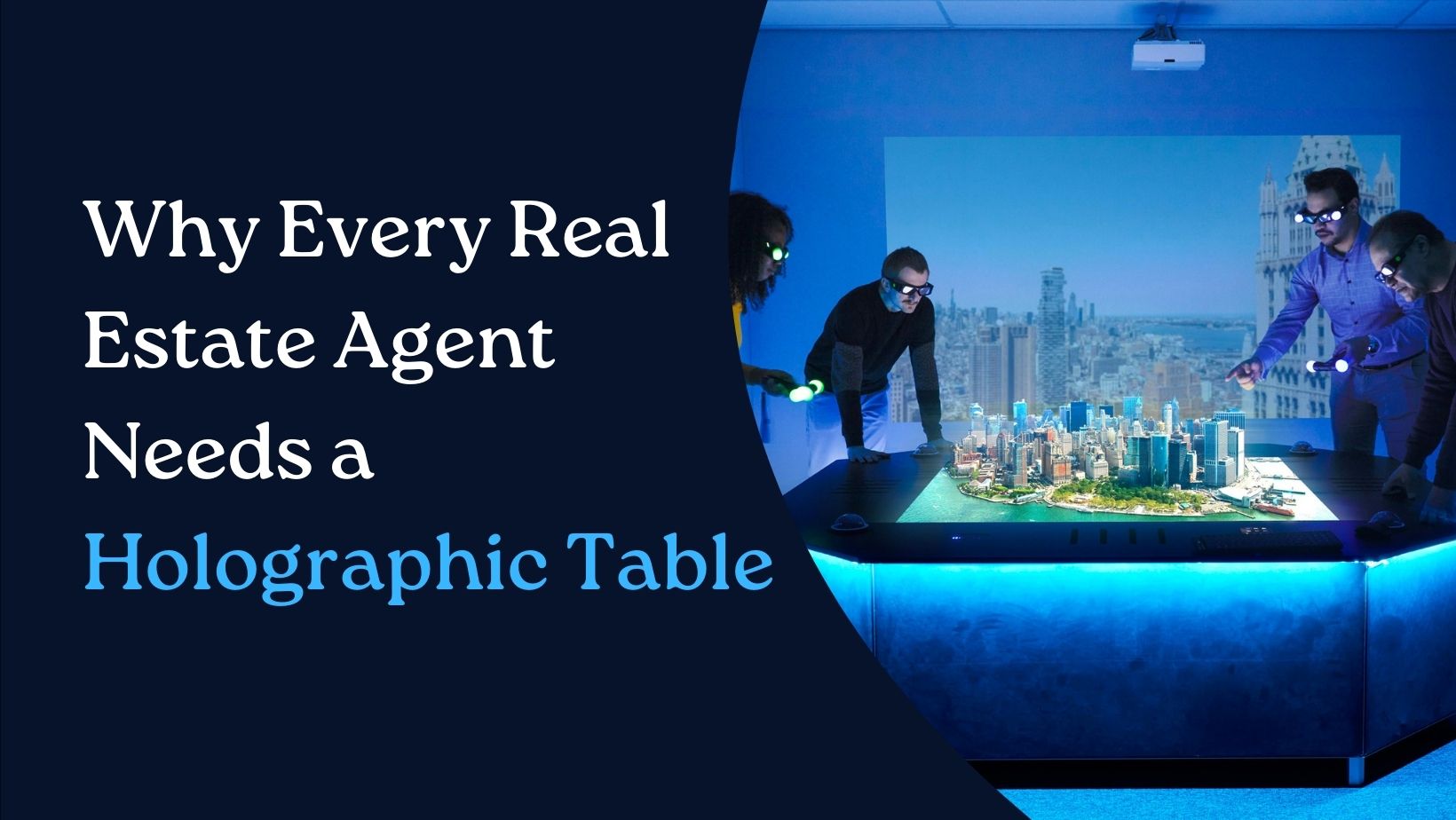In the ever-evolving landscape of real estate, technology continually reshapes the way professionals operate, market, and sell properties. Among the latest innovations, holographic tables have emerged as a revolutionary tool for real estate agents. These futuristic home 3D models offer immersive experiences that redefine property showcasing, client interactions, and decision-making processes. But why exactly does every real estate agent need a holographic table? Let’s delve deeper into the transformative potential of this cutting-edge technology.


Enter holographic tables: the latest game-changer for agents. These futuristic marvels project 3D models, revolutionizing property showcasing and client interactions.
Holographic Tables Overview
3D model makers are advanced display systems that project three-dimensional images onto a surface, creating realistic, interactive environments. Utilizing augmented reality (AR) or mixed reality (MR) technology, these tables enable users to visualize objects and spaces in ways previously unimaginable. Real estate agents can showcase properties, architectural designs, and interior layouts with stunning detail and realism. It provides clients with immersive experiences that transcend traditional methods.
Reasons Behind Choosing Holographic Tables by Real Estate Agent
Enhanced Property Presentations
One of the primary benefits of home 3D models for real estate agents lies in their ability to deliver captivating property presentations. Instead of relying solely on static images or 2D-floor plans, agents can project lifelike 3D models of homes, condos, or commercial spaces directly onto the table’s surface. Clients can explore every room, angle, and feature as if they were physically present, gaining a comprehensive understanding of the property’s layout and design.
With interactive controls, users can customize virtual tours, and adjust furniture placements, colour schemes, and decor options in real-time. This level of flexibility allows agents to cater to individual preferences and showcase the full potential of a property, thereby enhancing client engagement and facilitating informed decision-making.
Streamlined Collaboration and Communication
In the fast-paced world of real estate, effective communication and collaboration are essential for success. 3D model makers serve as powerful collaboration tools, enabling agents to interact with clients, colleagues, and stakeholders dynamically and intuitively.
During property viewings or meetings, agents can gather around the holographic table, presenting listings, discussing features, and addressing questions with unparalleled clarity. Clients can provide instant feedback, express preferences, and visualize customization options on the spot, fostering productive dialogue and expediting the decision-making process.
Moreover, remote collaboration becomes seamless with holographic tables, as participants can connect from anywhere in the world via virtual conferencing platforms. Whether it’s coordinating with international clients or consulting with architects and designers, agents can leverage this technology to bridge geographical barriers and facilitate smooth communication channels.
Differentiation and Competitive Edge
In a competitive real estate market, standing out from the crowd is paramount for success. Holographic tables offer a unique selling proposition that can distinguish agents from their peers and elevate their brand image.
By incorporating cutting-edge technology into their marketing strategies, agents signal innovation, sophistication, and a forward-thinking approach to clients and prospects. The ability to provide immersive, memorable experiences sets agents apart, leaving a lasting impression and positioning them as industry leaders in the eyes of potential clients.
Furthermore, the adoption of holographic tables can attract tech-savvy clientele who value modern amenities and expect a high level of service. By catering to this demographic, agents can expand their client base and tap into new market segments, thereby boosting their business growth and profitability.
Overcoming Challenges and Considerations
While home 3D models offer tremendous potential for real estate professionals, their adoption may also pose challenges and considerations. From technical requirements to cost implications, agents must carefully evaluate the feasibility and practicality of integrating this technology into their operations.
Technical Requirements and Training
Implementing holographic tables necessitates investment in compatible hardware, software, and infrastructure. Agents must ensure that their devices are capable of supporting AR or MR applications and that their network bandwidth can accommodate the data-intensive requirements of holographic rendering.
Moreover, agents and staff may require training to familiarize themselves with the operation of home 3D models and associated software platforms. While the learning curve may initially pose challenges, ongoing education and support can empower agents to leverage the full potential of this technology effectively.
Cost Considerations
Cost is another critical factor to consider when adopting holographic tables in real estate. The initial investment in hardware, software licenses, and setup costs can be substantial, particularly for smaller agencies or individual agents operating on tight budgets.
Agents must carefully weigh the potential return on investment (ROI) against the upfront expenses associated with holographic technology. While the enhanced client experience and competitive advantages may justify the costs for some, others may need to explore alternative financing options or consider phased implementation strategies.
Privacy and Security
As with any technology that involves data transmission and processing, privacy and security concerns are paramount. Agents must safeguard sensitive client information and ensure compliance with data protection regulations when utilizing 3D model makers.
Implementing robust cybersecurity measures, encryption protocols, and access controls can mitigate the risk of unauthorized access or data breaches. Additionally, agents should communicate transparently with clients about how their personal information is collected, stored, and utilized within the holographic platform.
Conclusion
So, home 3D models represent a transformative tool for real estate agents, offering enhanced property presentations, streamlined collaboration, and a competitive edge. While adoption may present challenges such as technical requirements and cost considerations, the benefits of immersive experiences and improved client engagement outweigh these hurdles. With careful planning and investment, holographic tables can revolutionize the way agents operate in the dynamic real estate landscape. For more details about holographic displays, connect with Vision3D customer care number – +91-8971953451.
